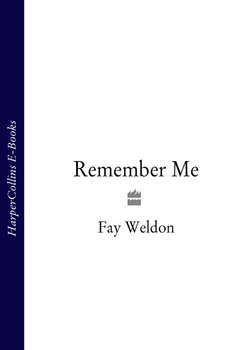Читать книгу Remember Me - Fay Weldon - Страница 14
11
ОглавлениеEverything has meaning. Nothing is wasted. Only the young believe that they can stand alone in the world, for good or bad, their own master, independent of the past – will cross the very globe, from south to north, like Lily, in the blithe belief that she will thus put her past behind her.
As we grow older we sense more and more that human beings make connections in much the same manner as the basic materials of matter: that we cluster, in fact, as do those complex molecular structures which we see as models in physical laboratories. The linkages are unexpected: they can be of objects, plants, places, events, anything. It is perhaps why we should take good care to polish furniture, water plants, telephone friends with whom we have nothing (apparently) in common, pay attention to coincidence, and in general help the linkages along, instead of opposing them – as sometimes, in our panic at our very unaloneness, we are moved to do.
Consider now these linkages: these interconnections:
Miss Maguire, now fifty-seven, was at the age of twenty the general maid at No. 12 Adelaide Row where Lily now lives. Her employers were a Mr and Mrs Karl Kominski.
Mr Karl Kominski’s sister Renate, in 1942 a refugee from Poland living in the Bay of Islands, New Zealand, bought half a pound of pressed ham from Lily’s father Matthew. That was the day before Matthew was called up and had to leave his pretty young English wife Ida behind to run the business, which she declined to do.
Margot’s friend Enid, now living at 24 Kafka Rise (which incidentally lies parallel to a Thomas Mann Crescent, at right angles to a Goethe Avenue, and is bisected by Balsac Street) has a pot plant which originated, as a cutting, from a plant which once flourished in Hamburg in the thirties, and belonged to old Mrs Kominski, Renate and Karl’s mother.
Enid’s husband Sam is an estate agent. In the golden days when money meant something and a house was a place you lived in and not the focal point of the occupier’s monetary, social and emotional fears, Sam’s first sale was of 12 Adelaide Row to Madeleine and Jarvis Katkin. That was in July, 1960, six months before Madeleine had discovered Jarvis copulating amongst the furs with a passing party guest.
Both Madeleine and Jarvis were overjoyed by the condition of the house, which had not been repaired, let alone painted, inside or out, since 1939. But whereas Jarvis saw the house as a challenge to his architectural skill, his ability to make something new and glorious out of the wreckage of the past, Madeleine’s pleasure found its source in the delapidation itself. She did not wish anything changed. Even in those days her suspicion of prosperity and comfort ran deep, though she chose to blame her circumstances rather than herself for the bleak discomfort in which she always lived. Madeleine declined Jarvis’s offer of joint ownership. No, she wished to be free, to have no ties. No dogs, no cats, no budgies, no carpets, no pot plants, no copper-bottomed saucepans. No Jarvis, one would almost have thought. The sink, later the launderette, when one finally opened in the new shopping precinct round the corner, was quite adequate to wash the clothes in.
